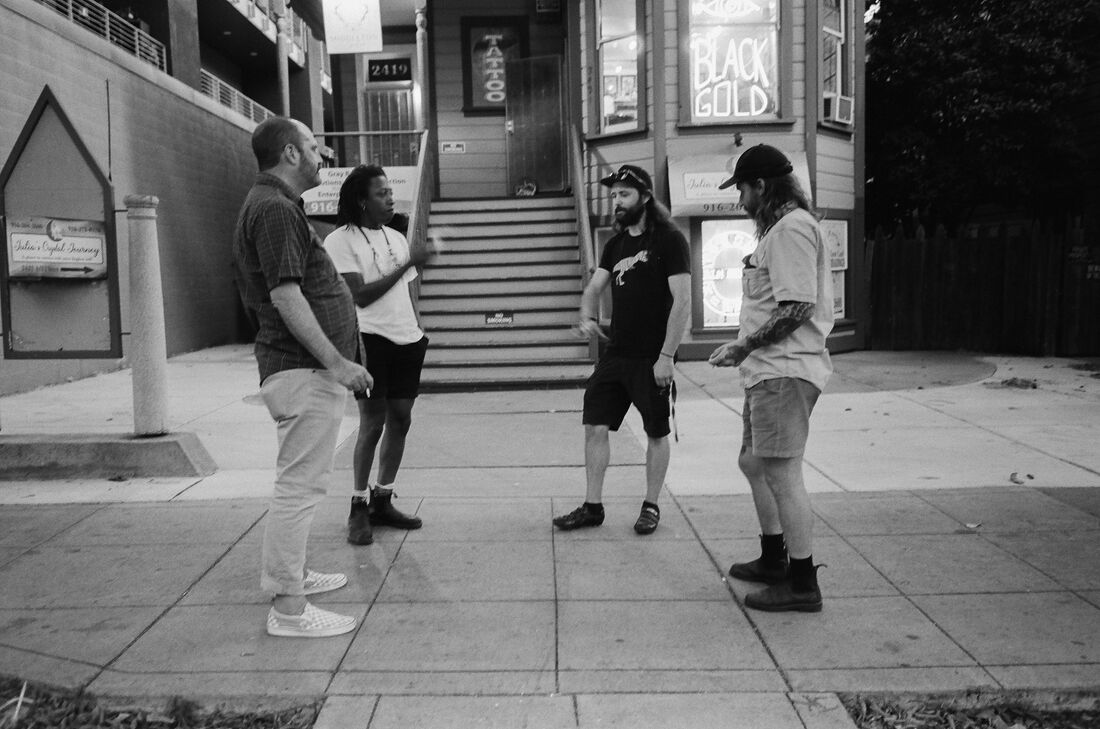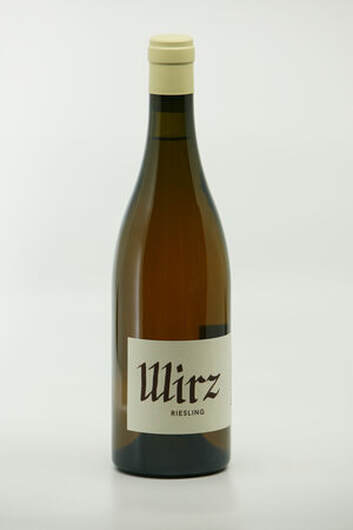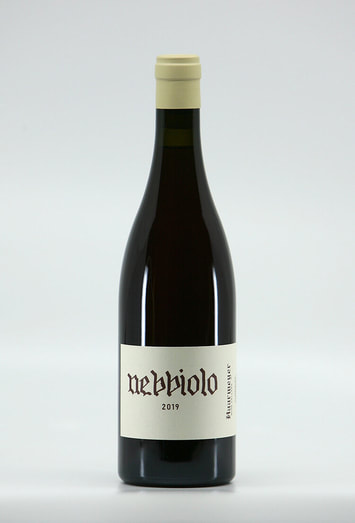Haarmeyer Wine Cellars, Sacramento, CA
Vineyard Areas: Lodi, Sacramento River Delta, Sierra Nevada Foothills
Varieties: Chenin Blanc, Riesling, Zinfandel, Nebbiolo,
Viticulture: Organic
Terroir: Alluvial, Gravel, Clay, Loam, Sand, Volcanic
Varieties: Chenin Blanc, Riesling, Zinfandel, Nebbiolo,
Viticulture: Organic
Terroir: Alluvial, Gravel, Clay, Loam, Sand, Volcanic
Haarmeyer Wine Cellars is a family team - Craig, Alex, Kelly, and Marian Haarmeyer. Started in 2008 with fruit from a vineyard near the town of Galt, CA, Craig was interested primarily in making wines using Spanish and Portuguese varieties, mainly because of the dry climate and the proximity of this vineyard to his home and winery in Sacramento, CA. He felt the place seemed right for the numerous varieties of sun loving, hardy grapes planted there. This led him to consider other sites and he noticed how the wines could define and express the terroir of the region. Soon he began using the phrase "Sacramento terroir" to describe his early efforts.
Their primary focus is on Chenin Blanc and how it expresses itself, the vineyard, and the cellar. As wine drinkers they gravitate to Chenin Blanc wines irrespective of origin - Classic Loire Valley wines, Savennières in particular, and South African old vine wines are constant reference points. The way Chenin can manifest itself is miriad and compelling. It has naturally high acidity and handles oxidative aging in such a way that the wines are refreshing and sour in their youth and nutty and complex in their old age. Chenin also seems to always express its varietal characteristics and its terroir. Chenin’s Chenin-ness shows itself even when the influence of the cellar is present. This grape is fascinating and their journey starts and ends there. They are committed to exploring Northern California terroirs through the lens of Chenin Blanc.
They have six vineyard sources for Chenin: three in the Sacramento River Delta, one in eastern Lodi, and two in the foothills of the Sierra Nevada. They work only with farmers who raise organic fruit and in the cellar they do as little modern processing as possible. Every lot is foot trodden and basket pressed without any corrections to chemistry or sulfur additions. The juice is exposed to oxygen and racked to neutral large format barrels and casks for unaided, native yeast fermentations. The wine remains in its fermentation vessel until it is assembled for bottling. All wines are ML complete and bottled without fining or filtering.
Chenin may rule the roost but they also make a very special old vine Riesling, a Nebbiolo, and Zinfandel.
Their primary focus is on Chenin Blanc and how it expresses itself, the vineyard, and the cellar. As wine drinkers they gravitate to Chenin Blanc wines irrespective of origin - Classic Loire Valley wines, Savennières in particular, and South African old vine wines are constant reference points. The way Chenin can manifest itself is miriad and compelling. It has naturally high acidity and handles oxidative aging in such a way that the wines are refreshing and sour in their youth and nutty and complex in their old age. Chenin also seems to always express its varietal characteristics and its terroir. Chenin’s Chenin-ness shows itself even when the influence of the cellar is present. This grape is fascinating and their journey starts and ends there. They are committed to exploring Northern California terroirs through the lens of Chenin Blanc.
They have six vineyard sources for Chenin: three in the Sacramento River Delta, one in eastern Lodi, and two in the foothills of the Sierra Nevada. They work only with farmers who raise organic fruit and in the cellar they do as little modern processing as possible. Every lot is foot trodden and basket pressed without any corrections to chemistry or sulfur additions. The juice is exposed to oxygen and racked to neutral large format barrels and casks for unaided, native yeast fermentations. The wine remains in its fermentation vessel until it is assembled for bottling. All wines are ML complete and bottled without fining or filtering.
Chenin may rule the roost but they also make a very special old vine Riesling, a Nebbiolo, and Zinfandel.
WINES
|
St. Rey Chenin: Haarymeyer's entry-level wine from young vine Chenin Sutter Ranch Vineyard in the Clarksburg AVA (sand and and clay soils). Foot treaded, pressed to tank, racked to barrel and tank. Spontaneous fermentation, spontaneous ML,
|
Wirz Reisling: The Wirz vineyard was planted by Almaden in 1963, back when big wineries were still planting vines on their own roots and furrow irrigation. Miraculously, the vineyard remains intact, thanks to work of the Wirz family. They were hired by Almaden to farm it because they lived on the property. Almaden eventually sold the vineyard to Pat Wirz’s father and Pat is the man who has been in charge for the past 45 years, farming it as his father once did with strict practices that honor the old tradition of caring for the land as well as the vines.
The site is just east of the San Andreas Fault. This piece of land has a limestone base with decomposed granite overlaying. Although it sits at about 1,000 feet above sea level and gets some marine air, the days are frequently quite warm. The vines are head-trained, tiny bush vines spaced ten feet apart and the clusters range in size from golf ball to baseball. The yield is typically about one ton per acre. De-stemmed, fermented in open top vats on skins and pressed at dryness. Aged on gross lees until bottling. ML complete. |
|
Nebbiolo: The Heringer family has a long history of farming in Clarksburg and has begun setting the example for organic farming in the region. The Nebbiolo we make from their vineyard is one of the lightest and most varietally correct you will find in California. That being said, the five rows of Nebbiolo they have planted is quite different from what we see in Italy. The soils are much richer here in the delta, the weather is much warmer, and the vines are pruned in a completely opposite way than what is the tradition in Italy. It’s trained on a quadrilateral cordon system and cropped at five tons to the acre. The traditional method is cane pruning and one is likely to see much lower yields.
This is one of our wines we refer to as partial-carbonic since we do not destem or foot tread the clusters. We simply pour them into open-top, one-ton fermenters, put the lid on, and let nature takes its course until we press at about 0 Brix to a neutral 600L oval-shaped foudre. The wine remains sur lie until we bottle without fining or filtration in March |
Zinfandel Calaveras: Rorick Heritage Vineyard is one of the most fascinating vineyards for me. It was originally surveyed during the gold rush and copies of that survey are stored on the property today. They did not find any gold but they did find limestone outcroppings jutting up from the valley floor, surrounded by decomposed schist, which constitutes the hillsides on each side of the valley. The vineyard was first planted to Cabernet and Chardonnay. Although we may have grown a bit tired of the Cab/Chard domination in California, it is worth noting that these blocks were own-rooted and the chardonnay is of Wente origins. About twenty years ago, the Stevenot folks planted the surrounding hillsides with Zinfandel, Syrah, Viognier, and other sun-loving Rhone varieties. In 2012 Matthew Rorick and his family purchased the vineyard; all 70 planted acres of it, and began rehabilitating it. There are two blocks of Zinfandel. We have worked with both and have decided that the lower block suits us best because of the higher acidity.
This is one of our wines we refer to as partial-carbonic since we do not destem the clusters. We simply pour them into open-top one-ton fermenters, put the lid on let nature take its course. Until the fermentation really gets going, we work the cap with our hands, turning over the fruit and keeping the top wet. Once it’s fermenting more vigorously, we foot tread the cap. Then we press at about 0 Brix to a neutral 500L oval puncheons. The wine remains sur lie until we bottle without fining or filtration in March. |
|
Stampede Zinfandel: The Stampede Vineyard was named after the fairgrounds next door where rodeo competitions have been held for generations. Planting of the vineyard began in the teens and twenties and finished in the 1940’s. It is comprised of own-rooted, head-trained Zinfandel with Mataro and Mission interplanted. The Perlegos brothers bought the property a few years ago and have started rehabilitating it by introducing cover crops and replanting the vines that have died off. The soil is very sandy and coarse as the vineyard is situated on the high banks of the Mokelumne River in the eastern section of the Lodi AVA.
In the cellar, they simply poured the clusters into one-ton open-top fermenters and waited a few days for signs of activity. Subsequently, tread lightly in order to just juice the top portion of the fruit. We drained and pressed to neutral 500L puncheons and bottled ten months later without fining or filtering. The wine is light, bright, and structured. |
Cresci Chenin Blanc: From the Palmero Family Vineyard was planted in 1983 by Gerald Cresci on a rocky swale in the Borden Ranch sub-AVA of Lodi. The soils are austere: pink granite and quartz.
It was foot treaded for skin contact, fermented in puncheon sans additions and was aged 11 months in barrel. Fifty-five cases produced. |
|
Chenin Blanc En Foudre: Made up entirely of Chenin Blanc from the Wilson Vineyard in Clarksburg, the vines are 20+ years old and grow upon beds of silty clay loam. The warm climate is tempered by a marine breeze from the San Francisco/San Pablo Bay. Upon harvest, the fruit is foot trodden and then basket pressed. The wine is then racked into French oak where fermentation occurs spontaneously, as well as malolactic. The wine is left sur lie nearly one year and is bottled without fining or filtration.
|
|











